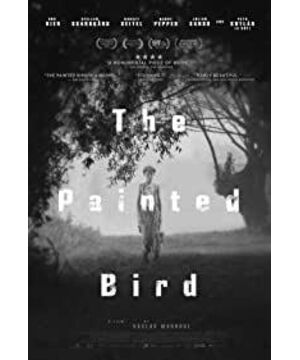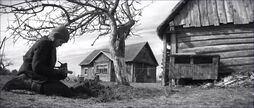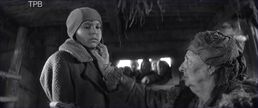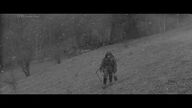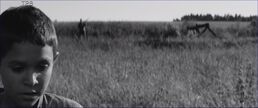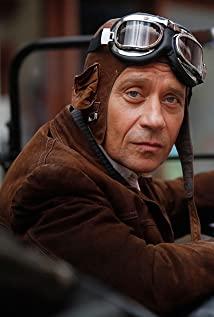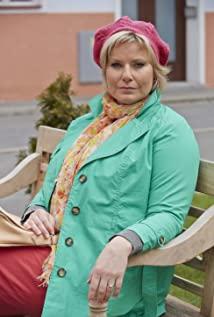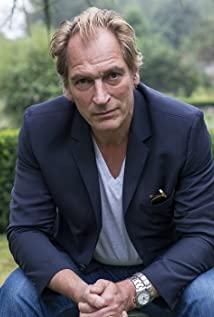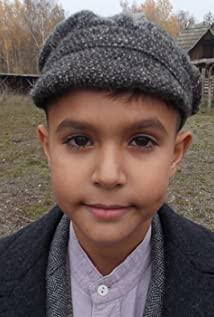I can't bear to give this film four stars.
That's why even though I feel that this film is far from reaching the status of a masterpiece in my mind, I still give it five stars. There are many good films this year, but there are not as many really excellent films as expected. There are too many plots with similar rhythms but not changing the medicine. Everything under the camera is habitually recorded in accordance with our usual thinking order. When Jia Zhangke's lens is aimed at the little people, to tell the history of the changes of the times, it can really make people feel the times, but now too many works have a Jia director dream, but the real pattern is always limited to the little people.
The reason for this is that I really feel that this film is a line drawing of the panorama of the times, and every shot is filled with different souls that have been smeared.
plot
"The Painted Bird", itself an adaptation, is based on Jerzy Kosinski's 1965 novel of the same name.
Speaking of this novel, it's pretty awesome. The New York Times Book Review once praised it as one of the best, and the literary world agrees that this is a rare and excellent literary work, especially for the author's attention to race and culture. In the context of World War II, the depiction of human nature, the differences and contradictions between different ethnic groups, and the smeared bird have not been questioned in its depth.
But the first thing to know is that the story itself is not a so-called "true" story.
Although the author claims that everything in the book is his own experience, the protagonist in the book has been traveling in European villages of unknown geographical location. Most of the information is unclear in terms of location and time.
This phenomenon is more obvious in the movie, the process of the boy entering each world is consciously ignored and thus appears magical. It is very clever that the director minimizes this kind of content that is difficult to explain to the greatest extent through its narrative structure, which will be discussed in detail later.
Personally, it is this sense of magical realism preserved in films that is most appealing.
Like most literary films, this is a work with very little dialogue. In any literary and artistic work, whether it is a book or a movie, a good work must have a trapezoidal structure. Simply put, readers and audiences need to feel themselves climbing up and down a ladder when they appreciate the work. The bottom layer of this ladder is the material foundation, and the top layer is the spiritual sublimation.
Here's a simple example from the novel:
An elementary school child was walking alone with a schoolbag, and saw her friend waving to her. The friend's mother was babbling about combing her own child's hair. This is the low end of the ladder.
She thought of combing her own hair every day, and that her mother would always go to work before she got up. This is sublimated to the middle of the ladder, with emotional information in recollection.
Finally, she felt the coolness of the wind, as if she was out of tune with the world. Although it is a bit exaggerated, this is probably the top of the ladder, the highest spiritual peak - loneliness. [Actually, this is not a quote, it's just an example that can be seen or not.]
For movies, it is usually difficult to express the inner thoughts of characters, so in order to climb this ladder, many films choose to use large sections of dialogue, allowing the protagonist to use the power of language in quarrels or grief to achieve emotional explosions. Another film does the opposite, with no words at all at the top of the ladder, and uses metaphors and symbols to fully express the characters' emotions.
The latter we usually refer to as literary films.
Without spoilers, let's take a look at how this typical literary film achieves this sense of reality and magic by "climbing the ladder", and what are the advantages and disadvantages of this style.
"The Painted Bird" is connected by the boy's knowledge and experiences. The customs and people he saw and the people he knew became a solid foundation at the bottom of the ladder.
The whole film is divided into different subsections, most of which are not to describe the boy himself, but the different people and things he encounters. He saw with his own eyes cruel men, jealous women, tit-for-tat soldiers, kind priests, hypocritical believers... He saw love, fear, arrogance, sexuality... all of which the world he saw through his eyes was very European Amorous feelings and human colors.
Under such a foundation, the film began to "climb the ladder".
Since the male protagonist was unable to speak in the later stage of "The Painted Bird", the sublimation of the entire plot was answered in symbols and various metaphors.
The Nazi sign, the rejection of the boy's Jewish identity, the soldier who couldn't bear to shoot, the train to the concentration camp, the ceremony in the church, the massacre in the village, the soldier's worship of Stalin, the gun for the boy, the train home... Among them Each point of information is a sublimation of its true dimension. If you really take a closer look, it's easy to get the reason why this story is called an era sketch.
It discusses war because a village is brutally slaughtered, the murderers have no mercy or hesitation, and the murdered have no hope or life. It discusses human nature, the scorn and bullying of outsiders by feudal village people, the little pity left in the hearts of Nazi soldiers, and the brutal massacre of Jews. At the same time, it is incredibly real. The boy never had any belief in salvation, he wandered the earth, only hoping to continue to survive.
In addition to the reality sublimation as we know it, there is a higher level of spiritual sublimation. That's the abstract message associated with the title of this film, the smeared bird.
In the film Beacon, European mythology is widely strung in the protagonist's fantasies (perhaps not fantasies). In this film, European superstitions are connected with reality. The most representative is undoubtedly the picture of the boy buried in the soil and being pecked by a bird, and the picture of the bird being painted and pecked to death by the same kind.
All this information being presented is part of the reason why I can't bear to give the film four stars. When so many elements are put together, it is very difficult to convey emotions. Without relying on language, to depict a simple social sketch, I think this film is better than many other literary films as a literary film. place.
Of course there are still disadvantages.
The emotions are not conveyed well enough, the story rarely has a climax, and many contents are not conveyed clearly. Especially why don't boys talk? Is he mute, temporarily lost his voice, or is he unwilling to communicate with others? Not all information in an art film must be conveyed clearly and in place, but vague information must have a reason for it. It's completely at a loss, and I deduct points for this film very much.
narrative structure
There are actually quite a few movies narrated in chapters. For example, Quentin likes to use chapters to connect storylines.
This kind of inserting a title between the film and the film is actually very practical. In Quentin's work, the title helps him to break the story line perfectly and then reassemble it, such as "Pulp Fiction". With the help of chapters, he travels back and forth in his free timeline, changing the perspective of the story recklessly and realizing his non-linear narrative.
"Painting Bird" uses its other characteristics, by breaking a complete story line, blurring the time and space boundaries between each chapter, and at the same time separating each story, so that different characters can leave their predecessors behind get your own development. It's a bit like a short TV series. The people in the first and second episodes don't know each other, and because of such a difference in the number of episodes, the audience will not pay attention to the follow-up development of the former.
This also led to the style of the entire film being completely projected on a large social background.
Unlike novels, which can take thousands of words to write about a person in detail, movies can only use footage. Like the films of Jia Zhangke mentioned earlier, in order to show the times, the camera is aimed at small people, and the characters are explained in detail, and the world behind them will naturally come out. And "painted bird" is obviously unwilling to point the camera at any individual.
I mentioned before that the whole plot is actually from the perspective of the male protagonist to know different people. The reason why I say this is because the chapters of the whole movie are distinguished by different names. Through the stories of different people to gradually give a comprehensive view of society.
This narrative structure itself has no advantages or disadvantages, it depends on personal preferences and the director's pursuit. Based on the style of the original book, I personally think this narrative structure is undoubtedly the most suitable.
View more about The Painted Bird reviews


